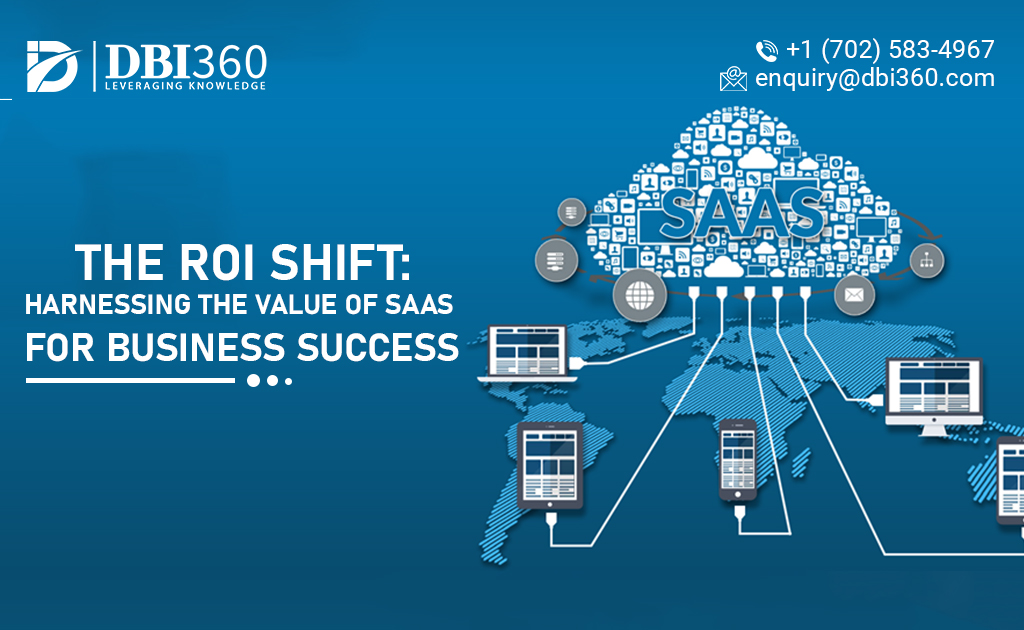Introduction:
In today’s dynamic business landscape, organizations constantly seek ways to maximize their return on investment (ROI) and drive business value. One transformative tool that has emerged is Software-as-a-Service (SaaS). By shifting the focus from upfront costs to long-term value, SaaS solutions can revolutionize ROI for businesses.
This blog will explore how SaaS Solutions transform costs into value, from scalability and flexibility to innovation and strategic advantages. With real-world examples and practical strategies, we will showcase the tremendous potential of SaaS in driving business growth and success.
I. Scalability and Flexibility: Driving ROI Through Adaptability
Scalable solutions: SaaS offers businesses the flexibility to scale their software usage based on their evolving needs, allowing them to expand into new markets and accommodate growth without the constraints of traditional software licenses. By leveraging the pay-as-you-go model, businesses can optimize cost efficiency and ROI.
Reduced infrastructure costs: SaaS eliminates the need for on-premises infrastructure, reducing upfront capital expenses and ongoing maintenance costs. With SaaS, businesses can focus on core operations, innovation, and customer-centric activities.
Pay-as-you-go model: One of the critical advantages of SaaS is its subscription-based pricing model. Businesses only pay for the resources and features they use, allowing them to optimize their software investments and align costs with actual usage.
II. Operational Efficiency and Cost Savings: Unlocking Value Through Streamlined Processes
Automation and process optimization: SaaS solutions streamline and automate repetitive tasks, reducing manual effort, minimizing errors, and improving overall operational efficiency. Businesses can redirect their resources towards strategic initiatives and value-added activities by eliminating time-consuming manual processes.
Integration and collaboration: SaaS enables seamless integration between different applications and departments, fostering collaboration, enhancing communication, and eliminating data silos. Businesses can streamline workflows, improve productivity, and drive efficiency by breaking down communication barriers and facilitating cross-functional collaboration.
Reduced IT overhead: With SaaS, businesses can offload the burden of software maintenance and upgrades to the service provider, freeing up IT resources and reducing overhead costs. This allows IT teams to focus on strategic initiatives, innovation, and supporting core business operations.
III. Innovation and Competitive Advantage: Leveraging SaaS for Strategic Growth
Access to cutting-edge technology: SaaS provides businesses with access to the latest software advancements and innovations without significant upfront investments. By leveraging the expertise of SaaS providers, businesses can stay ahead of the curve and capitalize on emerging technologies.
Rapid deployment and time-to-market: SaaS solutions offer quick and easy deployment, enabling businesses to seize growth opportunities, launch new products, and stay ahead of competitors. By accelerating time-to-market, businesses can gain a competitive edge and capitalize on market trends.
Strategic focus: By leveraging SaaS for routine tasks and operations, businesses can redirect resources toward strategic initiatives, innovation, and customer-centric activities. This strategic focus allows businesses to differentiate themselves in the market, drive long-term value, and achieve sustainable growth.
IV. Real-World Examples: SaaS Transforming ROI
Case study: How Company X achieved a 30% reduction in operational costs by implementing SaaS solutions for their supply chain management. By streamlining processes, enabling real-time collaboration, and gaining actionable insights, Company X improved efficiency and drove significant cost savings.
Industry trends: Explore how various industries, such as finance, healthcare, and manufacturing, are leveraging SaaS to transform their ROI. SaaS solutions are revolutionizing business outcomes, from improving customer experiences to optimizing operations and enabling data-driven decision-making.
Conclusion
As businesses strive to optimize their ROI and drive sustainable growth, embracing SaaS solutions has become imperative. By shifting the focus from upfront costs to long-term value, SaaS enables scalability, flexibility, operational efficiency, innovation, and strategic advantages. With reduced infrastructure costs, streamlined processes, and access to cutting-edge technology, businesses can unlock value, drive ROI, and achieve their growth objectives. Embracing the transformative power of SaaS is critical to staying competitive and thriving in a rapidly changing business landscape.

